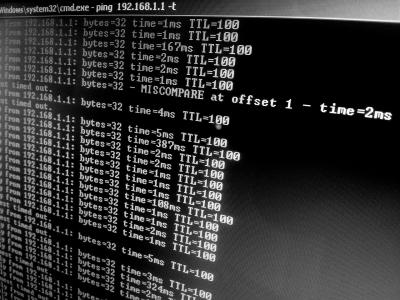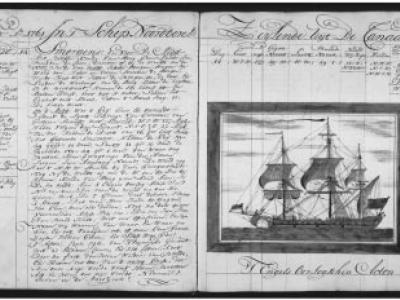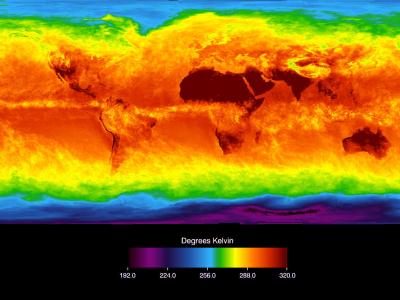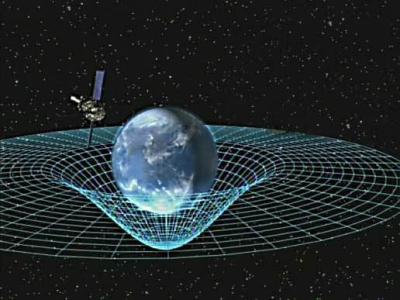Dataset Entries from this Author

TBD
- Categories:

Ping reponse times from google.com
- Categories:

10,000 rows of sample data in four formats (CSV, JSON, XML, XLSX) for testing. Fields are as follows: seq, first, last, age, street, city, state, zip, dollar, pick, date, latitude, longitude, birthday, ccnumber, dollar, ccnumber, phone, email, sentence, paragraph
- Categories:

This data comes from the Climatological Database for the World's Oceans 1750-1850. The data includes observational records of ship location, weather data, and other associated data.
- Categories:

- To encourage research on algorithms that scale to commercial sizes
- To provide a reference dataset for evaluating research
- As a shortcut alternative to creating a large dataset with APIs (e.g. The Echo Nest's)
- To help new researchers get started in the MIR field
- Categories:

- Categories:

Drosophila Melanogaster, the common fruit fly, is a model organism which has been extensively used in entymological research. It is one of the most studied organisms in biological research, particularly in genetics and developmental biology.
When its not being used for scientific research, D. melanogaster is a common pest in homes, restaurants, and anywhere else that serves food. They are not to be confused with Tephritidae flys (also known as fruit flys).
https://en.wikipedia.org/wiki/Drosophila_melanogaster
- Categories:

Early data was collected by technicians using mercury thermometers, where any variation in the visit time impacted measurements. In the 1940s, the construction of airports caused many weather stations to be moved. In the 1980s, there was a move to electronic thermometers that are said to have a cooling bias.
Given this complexity, there are a range of organizations that collate climate trends data. The three most cited land and ocean temperature data sets are NOAA’s MLOST, NASA’s GISTEMP and the UK’s HadCrut.
- Categories:

On February 11th 2016 LIGO-Virgo collaboration gave the announce of the discovery of Gravitational Waves, just 100 years after the Einstein’s paper on their prediction. The LIGO Scientific Collaboration (LSC) and the Virgo Collaboration prepared a web page to inform the broader community about a confirmed astrophysical event observed by the gravitational-wave detectors, and to make the data around that time available for others to analyze
- Categories:
Open Access Entries from this Author

Please enter a complete abstract with details on your dataset files, scripts, and other relevant information.
- Categories:
Category
Data Management Plan Entries from this Author
My Data Research Project
- Citation Author(s):
- Created by:
- Alex Outman
- Last updated:
 127 views
127 views
Project Description
This Data Management Plan (DMP) is related to My Data Research Project. The project title is "My Data Research Project". The focus of this project is to collect data that will be stored as a dataset in IEEE DataPort and shared with the scientific community to enable advancements in the field of data sciences. During the 1-year term of the project, data will be collected on a continuous basis using both unmanned vehicles and cameras that collect images. It is expected that a total of between 1TB and 2TB of data will be collected during the project term.
Data Access and Data Sharing
- Data for Spatial and Channel Two-step Processing Lightweight Modules to Replace Convolution will be made accessible to the global technical community on an Open Access basis through IEEE DataPort™, a secure web-based data repository that enables large amounts of data to be stored and enables data to be made publicly accessible to all without cost (Open Access data). The goal is to share Spatial and Channel Two-step Processing Lightweight Modules to Replace Convolution data openly with the research community to enable this research to have the maximum impact and to bring exposure to this valuable research.
- Users will not have to make special requests of the researcher to access the data because it will be searchable and available at all times through IEEE DataPort. In IEEE DataPort, data is stored in the Amazon Web Services S3 Cloud and can either be downloaded by users or accessed directly in the Amazon Web Services S3 Cloud to facilitate data analysis. The anticipated size of the dataset files made available on IEEE DataPort is 500M.
- The data from Spatial and Channel Two-step Processing Lightweight Modules to Replace Convolution will be stored and made accessible through IEEE DataPort for 10 years. IEEE maintains IEEE DataPort and is committed to ensuring data is stored and accessible for duration of 10 years after the conclusion of the project.
- Original data from Spatial and Channel Two-step Processing Lightweight Modules to Replace Convolution project will be posted on IEEE DataPort. Original data may be posted to IEEE DataPort as it becomes available through the project term to enable the scientific community to begin accessing the valuable data even during the project term. Metadata will also be publicly available through IEEE DataPort and the research team may also post processed data on IEEE DataPort.
- Data will be shared with the general public through IEEE DataPort and those who specifically ask for the data will be advised to access it directly through IEEE DataPort. The research team will retain ownership of the data, but will provide a Creative Commons Attribution 4.0 International to IEEE DataPort users so they can download and utilize it to accelerate their research or supplement their research efforts. Any use of the data will require the user to provide the proper citation for the data and IEEE DataPort provides data citations in eight different formats to make it easy for the user to cite the data properly.
- Through IEEE DataPort, it will be possible to track users who access Spatial and Channel Two-step Processing Lightweight Modules to Replace Convolution data if necessary.
- Re-use, Re-distribution and Derivatives: As noted above, the research team will retain ownership of the data collected in Spatial and Channel Two-step Processing Lightweight Modules to Replace Convolution, but will provide a Creative Commons Attribution 4.0 International license to IEEE DataPort users so they can download and utilize it to accelerate their research or supplement their research efforts. Any use or redistribution of the data will have a requirement of attribution and the users must provide the proper citation for the data. IEEE DataPort provides data citations in eight different formats to make it easy for the user to cite the data properly. The eight different formats are as follows: IEEE, BibTeX, RIS, APA, Harvard, MLA, Vancouver, and Chicago. If NIST requires a specific citation format, that can be included in IEEE DataPort. Matters of appropriate protection of privacy, confidentiality, security, intellectual property, or other rights or requirements are managed through the IEEE DataPort Terms of Use and each IEEE DataPort user that wants to upload a dataset is required to agree to the IEEE DataPort Terms of Use before uploading.
Metadata Requirements on IEEE DataPort
IEEE DataPort is designed to store metadata for each dataset submitted on the platform. All metadata is indexed and accessible in human and machine readable formats. The following metadata is supported by IEEE DataPort:
- Metadata - Required Fields
- Title of Dataset
- Citation: name(s) of data author(s)
- Category (subject matter or topic)
- Abstract
- Instructions
- DOI
- Metadata - Optional Fields
- Keywords
- Data Format
- Related Dataset(s)
- Scripts
- Dataset Image
- Documentation file(s)
Cost of Data Retention and Accessibility
The estimated cost to utilize IEEE DataPort for Spatial and Channel Two-step Processing Lightweight Modules to Replace Convolution as described in this Data Management Plan is $1950. The $1950 cost value represents an anticipated data volume of at approximately 500M.
Print Data Management Plan